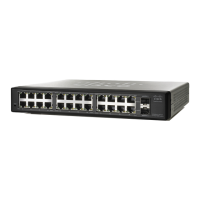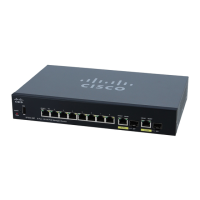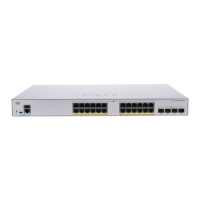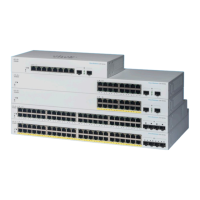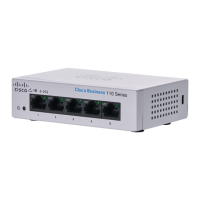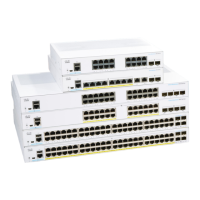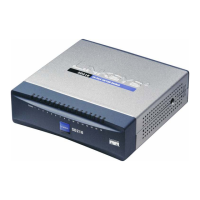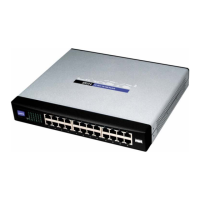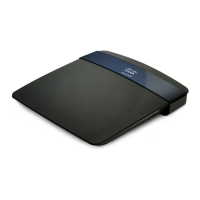IP Configuration
IPv4 Management and Interfaces
Cisco Small Business 200 Series Smart Switch Administration Guide 232
18
• Remaining Information Refresh Time—Remaining time until next refresh.
• DNS Servers—List of DNS servers received from the DHCPv6 server.
• DNS Domain Search List—List of domains received from the DHCPv6 server.
• SNTP Servers—List of SNTP servers received from the DHCPv6 server.
• POSIX Timezone String—Timezone received from the DHCPv6 server.
• Configuration Server—Server containing configuration file received from the DHCPv6 server.
• Configuration Path Name—Path to configuration file on the configuration server received from the
DHCPv6 server.
IPv6 Tunnel
Tunnels enable transmission of IPv6 packets over IPv4 networks. Each tunnel has a source IPv4 address
and if it is a manual tunnel it also has a destination IPv4 address. The IPv6 packet is encapsulated between
these addresses.
ISATAP Tunnels
The type of tunnel that can be configured on the device is called an Intra-Site Automatic Tunnel Addressing
Protocol (ISATAP) tunnel, which is a point-to-multi-point tunnel. The source address is the IPv4 address of
the device.
When configuring an ISATAP tunnel, the destination IPv4 address is provided by the router. Note the
following:
• An IPv6 link local address is assigned to the ISATAP interface. The initial IP address is assigned to the
interface, which is then activated.
• If an ISATAP interface is active, the ISATAP router IPv4 address is resolved via DNS by using ISATAP-
to-IPv4 mapping. If the ISATAP DNS record is not resolved, the ISATAP host name-to-address
mapping is searched for in the host mapping table.
• When the ISATAP router IPv4 address is not resolved via the DNS process, the ISATAP IP interface
remains active. The system does not have a default router for ISATAP traffic until the DNS process is
resolved.
Configuring Tunnels
NOTE After configuring a tunnel, configure IPv6 interface in the IPv6 Interfaces page.
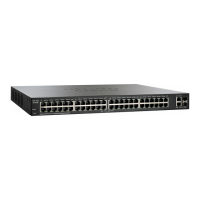
